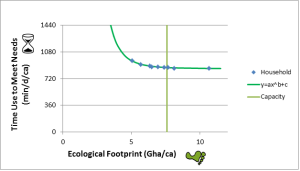Learning to write is much like learning any other skill – by taking instruction, and practicing. I had learned to write poetry as a teenage by writing hundreds of poems – some good, some not. As a professional, I have provided a technical review of many hundreds of reports, and written many. Now I am beginning to try to write scientific papers, and I am learning all over again. In this journey, I have discovered a few things that matter.
As a poet, my words flow free and complete from emotion to paper. As I find the right word for the moment, I cast it in the stone of ink, and it testifies there, to the end of time.
Reports are factual, and will provide the method the engineer used to come to the conclusions reached. Opinions of others will be referenced, and protocols will typically be referenced when they may be uncommon. All other work is to be the engineer’s, and it will be clear what is observation and what is opinion. Opinions that are counter to the conclusions of the report will not be mentioned, unless that is specifically what the report is intended for. Reports are as impersonal as possible, with all hyperbole eliminated and adjectives kept to a minimum. Reports are intended to present information and explain conclusions, without significant regard for whom the audience is beyond the specific recipient of the report. Editing tends to require as much time as writing.
Academic papers are intended to teach1. They will identify the need for the research, and they will clearly present the outcome2. They will specifically identify the work that has been done by others as it relates to the work being presented3. While not stated in the literature reviewed, it would be expected that the most appropriate reference would be used as the source material. And all of it will be very careful and deliberate.
Papers will be written, edited, rewritten, and improved many times before they are ready for publication4. They will be written in the specific style of the journal, but the general format is well defined5. Editing is expected to take 4 times the time required to write it originally6.
1 https://explorable.com/research-paper-question extracted July 16, 2016
2 http://www.nature.com/scitable/topicpage/scientific-papers-13815490 extracted July 16, 2016
3 http://abacus.bates.edu/~ganderso/biology/resources/writing/HTWgeneral.html extracted July 16, 2016
4 http://umech.mit.edu/freeman/6.021J/2000/writing.pdf extracted July 16, 2016
5 http://www.columbia.edu/cu/biology/ug/research/paper.html extracted July 16, 2016
6 Jack Harich, personal communication July 10, 2016
